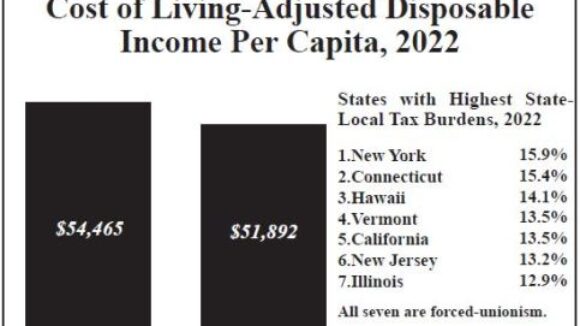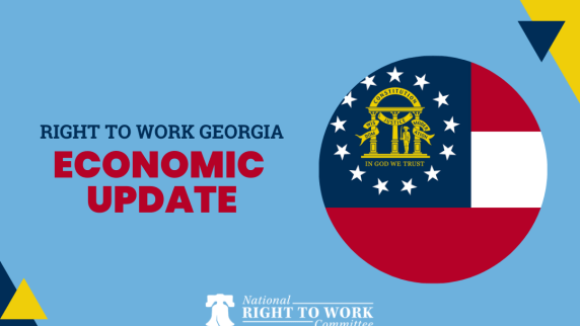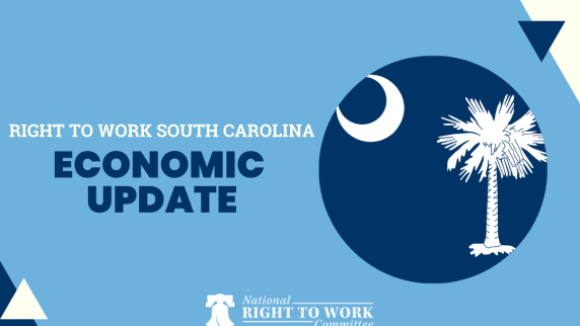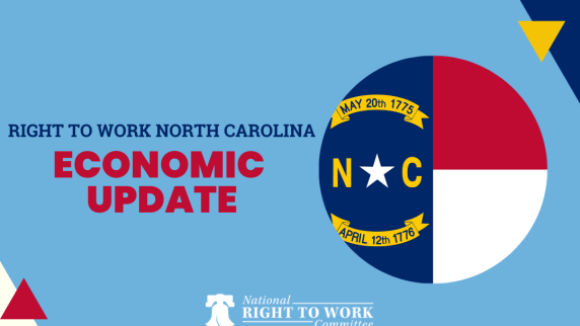Real Incomes Higher in Right to Work States
One reason why spendable income is higher in Right to Work states is forced-dues states’ substantially higher state-local tax burdens.

One reason why spendable income is higher in Right to Work states is forced-dues states’ substantially higher state-local tax burdens.

The most recent businesses making Right to Work Tennessee investments are 6K Energy, Kordsa, and Leclerc Foods.

Companies investing in Right to Work Georgia include Meissner Corporation, Seohan Auto Georgia, and Zoetis.

Businesses investing in Right to Work South Carolina include BorgWarner, Scout Boats, SEM Wafertech and Solar4America, and FN America.

ABB Company and Charter Next Generation are two companies that are planning to make expansions in Right to Work Wisconsin.

Some of the most recent investments are coming from Severn Peanut Company, Pilkington North America (PNA), and EPOC Enviro.

Businesses investing in Right to Work Tennessee include Duracell, Steamboat Transportation, and United Record Pressing.

Companies investing in Right to Work South Carolina include Interloop, Neal Brothers Charleston, and Blanchard Machinery.

Companies investing in Right to Work Virginia include Bowman Andros Products, Better Future Farms, and Weidmüller.